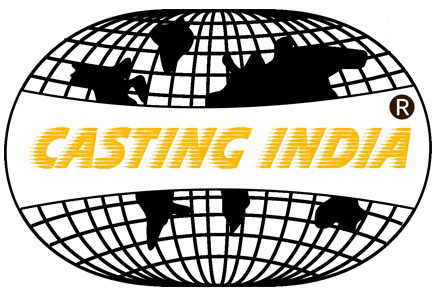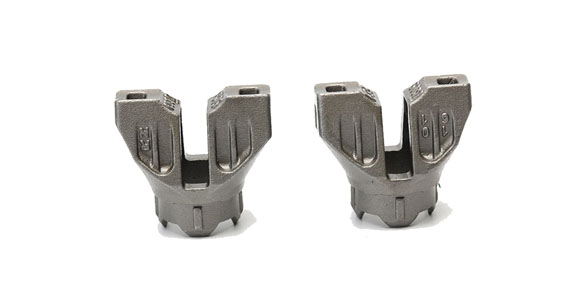
Investment Casting is regarded as a precision casting process to fabricate near-net-shaped metal parts from almost any alloy. Investment casting provides the ultimate technique for low weight precision steel casting production. The benefits of the investment casting process may be summed up by the four wordsaccuracy, versatility, integrity and finish. Few, if any, alternative metal forming methods can offer such a unique and broad spectrum of advantages. It is used for small castings 25 grams to 40 Kgs in weight.
Investment casting is one of the oldest manufacturing processes, dating back thousands of years, in which molten metal is poured into an expendable ceramic mold. The mold is formed by using a wax pattern - a disposable piece in the shape of the desired part. The pattern is surrounded, or "invested", into ceramic slurry that hardens into the mold. Investment casting is often referred to as "lost-wax casting" because the wax pattern is melted out of the mold after it has been formed. Lox-wax processes are one-to-one (one pattern creates one part), which increases production time and costs relative to other casting processes. However, since the mold is destroyed during the process, parts with complex geometries and intricate details can be created.
Investment casting can make use of most metals, most commonly using aluminum alloys, bronze alloys, magnesium alloys, cast iron, stainless steel, and tool steel. This process is beneficial for casting metals with high melting temperatures that can not be molded in plaster or metal. Parts that are typically made by investment casting include those with complex geometry such as turbine blades or firearm components. High temperature applications are also common, which includes parts for the automotive, aircraft, and military industries.
Investment casting requires the use of a metal die, wax, ceramic slurry, furnace, molten metal, and any machines needed for sandblasting, cutting, or grinding. The process steps include the following:
Pattern creation:
The wax patterns are typically injection molded into a metal die and are formed as one piece. Cores may be used to form any internal features on the pattern. Several of these patterns are attached to a central wax gating system (sprue, runners, and risers), to form a tree-like assembly. The gating system forms the channels through which the molten metal will flow to the mold cavity.
Mold creation:
This "pattern tree" is dipped into a slurry of fine ceramic particles, coated with more coarse particles, and then dried to form a ceramic shell around the patterns and gating system. This process is repeated until the shell is thick enough to withstand the molten metal it will encounter. The shell is then placed into an oven and the wax is melted out leaving a hollow ceramic shell that acts as a one-piece mold, hence the name "lost wax" casting.
Pouring:
The mold is preheated in a furnace to approximately 1000°C (1832°F) and the molten metal is poured from a ladle into the gating system of the mold, filling the mold cavity. Pouring is typically achieved manually under the force of gravity, but other methods such as vacuum or pressure are sometimes used.
Cooling:
After the mold has been filled, the molten metal is allowed to cool and solidify into the shape of the final casting. Cooling time depends on the thickness of the part, thickness of the mold, and the material used.
Casting removal:
After the molten metal has cooled, the mold can be broken and the casting removed. The ceramic mold is typically broken using water jets, but several other methods exist. Once removed, the parts are separated from the gating system by either sawing or cold breaking (using liquid nitrogen).
CFinishing:
Often times, finishing operations such as grinding or sandblasting are used to smooth the part at the gates. Heat treatment is also sometimes used to harden the final part.
Features of Investment Casting:
- Allows Undercuts in the pattern
- Tolerance of 0.5 % of length are possible, and for small dimensions it can be as low as 0.15 %
- Weight of the castings can range from a few grams for 60 Kgs
- Minimum wall thicknesses are about 0.5 mm to 1.0 mm
- Parts do not require machining because of the closed tolerances
- Smooth surface finish
- Excellent production rates, particularly for small components
- Through dimensional accuracy and consistency
- High integrity castings
- Machining can be eliminates
- Minimal shot blast and grinding needed
AppliSand Mouldion of Investment Casting:
Typically materials that can be cast with this process are Aluminium alloys, Bronzes, Stainless Steels, Stellite etc. Glass mold accessory castings, valves and fittings, gears, Levers and Splines are some of the popular usages.
Material of construction:
All kind of ferreous



